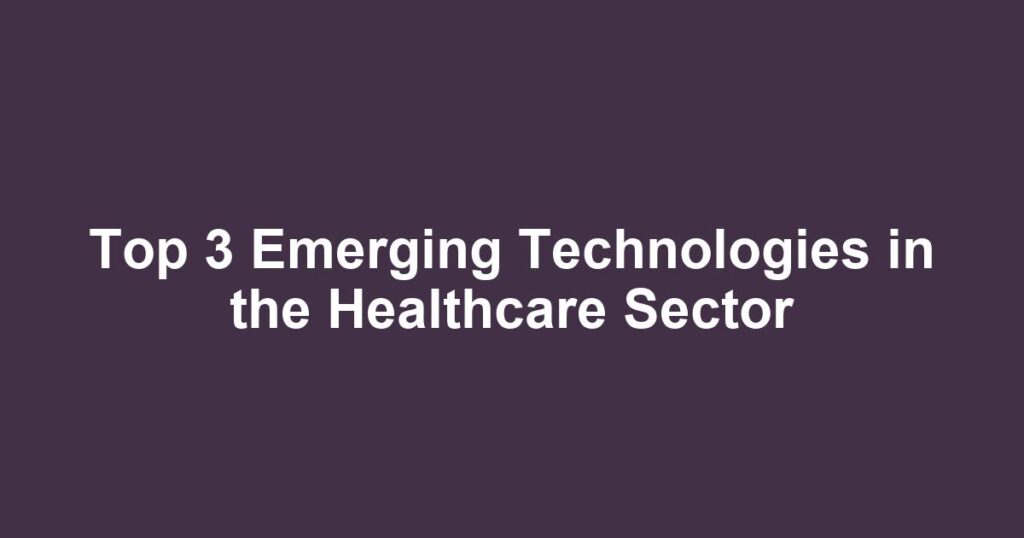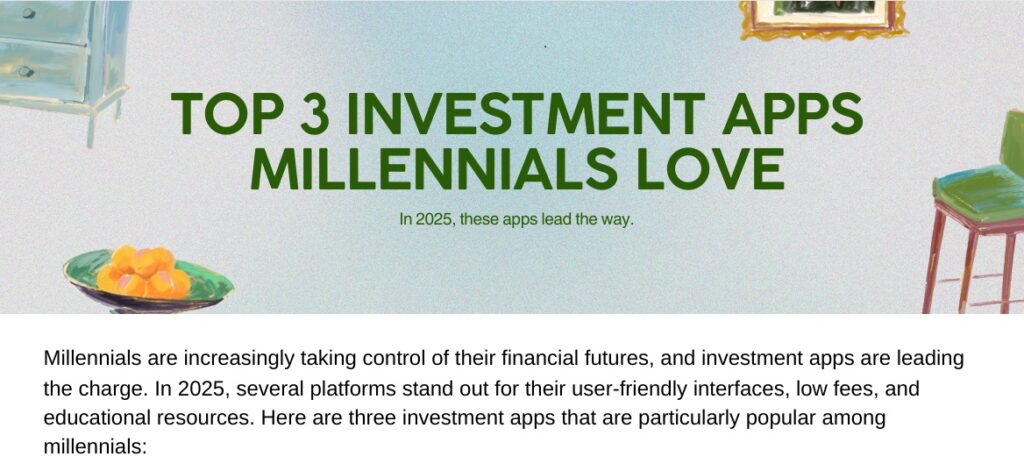Top 3 Emerging Technologies in the Healthcare Sector
The healthcare sector is often at the forefront of innovation, with emerging technologies dramatically reshaping how we diagnose, treat, and care for patients. These advancements not only improve patient outcomes but also enhance the efficiency of healthcare systems worldwide. In this article, we’ll explore the top three emerging technologies in the healthcare sector that are making waves today: artificial intelligence, telemedicine, and wearable technology.
1. Artificial Intelligence (AI) in Healthcare
Artificial Intelligence is revolutionizing healthcare by automating processes, improving diagnostic accuracy, and personalizing treatment plans. Here’s how AI is changing the landscape:
Enhanced Diagnostic Accuracy
AI algorithms are now capable of analyzing medical images with high precision. For instance:
- Radiology: AI can detect anomalies in X-rays, MRIs, and CT scans more quickly than human radiologists, leading to faster diagnosis of conditions like cancer.
- Pathology: Machine learning models can analyze tissue samples for signs of diseases, which helps in early detection and treatment.
Personalized Medicine
Emerging technologies in AI also allow for tailored treatment plans based on individual genetic profiles. This custom approach means:
- Patients receive treatments that are more likely to be effective.
- Healthcare providers can predict which patients are at risk of certain diseases based on genetic data.
Operational Efficiency
AI chatbots and virtual assistants streamline administrative tasks, allowing healthcare professionals to focus on patient care. Benefits include:
- Reduced workloads for staff.
- Improved patient engagement through immediate responses to inquiries.
2. Telemedicine: Healthcare Innovation at Its Best
Telemedicine has gained significant traction, especially during the COVID-19 pandemic, and continues to be a cornerstone of healthcare innovation. But what exactly is telemedicine?
What is Telemedicine?
Telemedicine refers to the delivery of healthcare services using telecommunications technology. This includes:
- Virtual consultations via video calls.
- Remote patient monitoring through various apps and devices.
- Real-time consultations between specialists using digital platforms.
Benefits of Telemedicine
Telemedicine offers numerous advantages that are transforming patient care:
- Increased Access: Patients in rural or underserved areas can access specialists without long travel times.
- Cost-Effective: Telemedicine reduces overhead costs for healthcare facilities and can lower the overall cost of care for patients.
- Convenience: Patients can attend appointments from the comfort of their homes, making it easier to fit medical visits into busy schedules.
How to Implement Telemedicine Successfully
For healthcare providers looking to adopt telemedicine, consider the following steps:
- Invest in reliable telemedicine platforms that prioritize security and user friendliness.
- Train staff on how to use telecommunication tools effectively.
- Market telemedicine services to ensure patients are aware and know how to access them.
- Regularly gather patient feedback to improve services.
3. Wearable Technology: Health Monitoring on the Go
The rise of wearable technology is another significant trend in healthcare innovation. These devices offer continuous health monitoring and empower individuals to take charge of their fitness and well-being.
Types of Wearable Devices
Wearable technologies come in various forms, including:
- Fitness Trackers: Devices that log daily activity, heart rate, and sleep patterns.
- Smartwatches: Feature health-monitoring capabilities, including ECG readings and blood oxygen levels.
- Wearable Health Monitors: Devices specifically designed to track chronic conditions like diabetes or cardiovascular health.
Benefits of Wearable Technology
Integrating wearable technology into daily life offers various benefits:
- Real-Time Data: Patients can monitor their health continuously and share this data with healthcare providers for better management of conditions.
- Proactive Health Management: Users can adjust their habits based on data trends, leading to improved overall health.
- Increased Patient Engagement: Patients become active participants in their health journeys, which can boost adherence to treatment plans.
How to Choose the Right Wearable Device
When selecting a wearable device, consider:
- Health monitoring needs: Determine what features are essential for your health condition.
- Compatibility: Ensure the device integrates smoothly with existing health apps or networks.
- Batter life and comfort: Choose a device that can be worn comfortably throughout the day.
Conclusion
The healthcare sector is experiencing a transformative phase, driven by emerging technologies like artificial intelligence, telemedicine, and wearable technology. These innovations are not just fleeting trends; they are reshaping how healthcare is delivered, improving patient outcomes, and making care more accessible.
As we move forward, it’s essential for both healthcare providers and patients to embrace these changes. Whether you’re a healthcare professional looking to enhance your practice or a patient seeking the best care options, staying informed about these emerging technologies is crucial.
Are you ready to leverage the benefits of healthcare innovation? Explore telemedicine options or invest in a wearable device today! The future of healthcare is bright, and you can be part of it.
Call to Action: Share your thoughts on which emerging technology you’re most excited about in the healthcare space! How do you think they can improve patient care in your experience?
Meta Description
Discover the top 3 emerging technologies in healthcare, including AI, telemedicine, and wearable technology, that are transforming patient care and outcomes.

